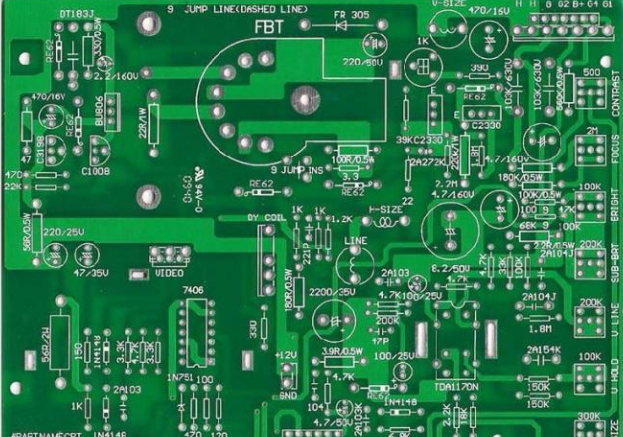Screen printing is usually used in the process of FPC flexible circuit board processing. Generally it is often used when printing single-sided printed circuit boards. The number of printed double-sided boards is small, but the number of double-sided rigid circuit boards is printed. But a lot.
In the process of FPC flexible circuit board processing, screen printing is usually used. It is often used when printing single-sided printed circuit boards. The number of printed double-sided boards is small, but the number of printed double-sided hard circuit boards is not. a lot of. However, in the actual processing process, in order to ensure the quality, it is necessary to analyze the matters needing attention in the screen printing of the double-sided FPC flexible circuit board with carbon ink as the conductive ink.
1. The main points of the screen printing technology of the upper double-sided flexible circuit board
Before screen printing, choose the materials to be used, and pre-baking the materials in advance, so that there will be no shrinkage and deformation during screen printing, otherwise there will be many problems in the subsequent processing links, which will directly affect the screen printing. quality.

In order to meet the design requirements, some of the double-sided flexible circuit boards require high dimensional accuracy. They can be numbered A, which can be used to distinguish them from the lower-layer circuit B. Generally, carbon ink materials are used to screen-print the A-side circuit. In the screen printing operation, the thickness of the ink must be controlled. After the ink thickness meets the design requirements, the resistance requirements of the entire circuit can also be met to ensure normal operation in the future. use.
2. Precautions for screen printing of lower-layer circuits
In the screen printing process, the positioning hole should be used as a reference, and the lower layer circuit should be printed on the side that has not been screen printed. As mentioned above, the drape faces the B side, so after the screen printing is completed, the drape should also be covered. After the screen printing is completed, it has a strong fluidity due to gravity, so that the carbon ink can easily fill the carbon holes, and finally it is well connected with the upper circuit, so that the A side and the B side are The conduction is well completed, but if the drape faces A side, the ink will flow to the A side line through the carbon filling hole when screen printing on the B side. Under the blocking action of the drape, the height of the drape can be set to h, so that the ink If you do not agree to flow through the front, it will not be able to communicate well with A. It can be seen that in this case, the A-layer line and the B-layer line are basically impossible to conduct. The fluidity of the screen printing conductive ink is also very important for the conduction of the carbon filling holes. Generally, the inks used are relatively viscous, and the actual fluidity is very poor, resulting in a low probability that the upper and lower lines can be connected. When printing, when the machine printing method is used, a vacuum suction device is used on the workbench, which can improve the fluidity of the conductive ink, but this measure also has a drawback, that is, residues on the workbench after operation If a large amount of ink is not removed in time, the quality of the circuit will be reduced. When manual printing is used, no vacuum suction device is installed on the worktable. After the screen printing operation of the circuit is completed, it should be combined with the actual Under the circumstances, place the circuit board for a period of time, and then put it in the drying oven for drying treatment, so that the ink can flow fully, so that the upper and lower circuits will be well connected. However, the thickness of the ink must be effectively controlled during specific screen printing, so as to ensure that the circuit resistance value is consistent with the design.
After completing the above work, the final shape of the stamping operation must be done, and the FPC product must be inspected at the same time. According to the different use of the circuit board, it must meet the designed outline size during the stamping process, and finally the circuit is tested, and no short circuit occurs. The problem is that there can be no short-circuit problem. After the detection resistance value meets the design requirements, after all these aspects are qualified, this double-sided FPC screen printing is qualified. Aiming at the problems in the screen printing of double-sided flexible circuit boards, effective solutions were proposed to ensure the quality of processing. Due to different materials, design forms, and usage conditions, in order to design a circuit board that meets the requirements, technicians must coordinate and integrate, master relevant knowledge, propose effective methods to deal with problems, optimize production and processing techniques, and integrate new technologies in time. Further improve the quality of China's double-sided flexible circuit board screen printing technology, and occupy an advantage in international competition.